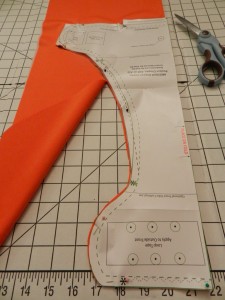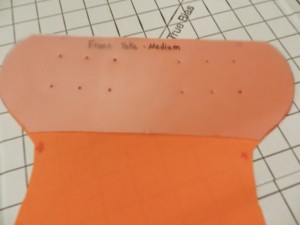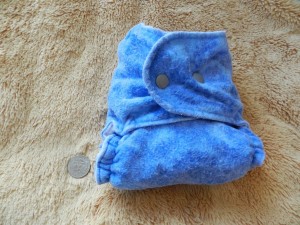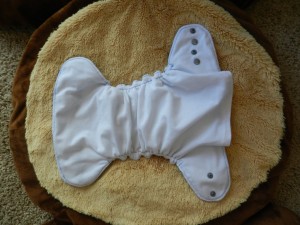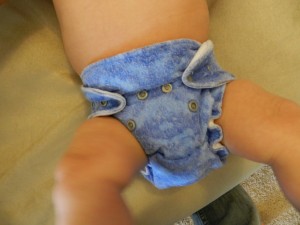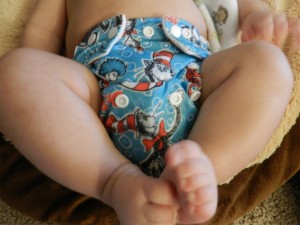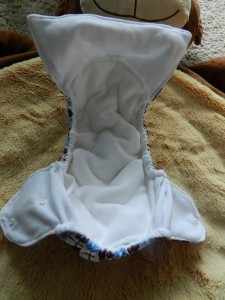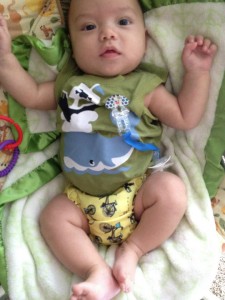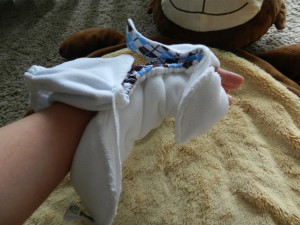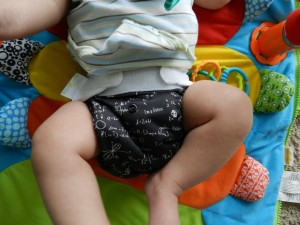Hubby put his foot down. No more buying fluff. 🙁 But he did say that I can make our own diapers for Baby J! My first venture in the DIY diaper-making biz was to convert a prefold to a fitted. That was…laughable. I’m conflicted about whether or not I should share my experience with vivid photos or not. On one side, it’s a little humiliating for me. On the flip side, it could be a guffaw moment for you.
I am going to show my experiences with the second diaper I made: a pocket diaper. It definitely didn’t turn out perfect, and I have some things I need to improve upon next time around. But it’s a usable diaper, and that’s what counts, right? Right?!
There are a myriad of patterns floating around the Web, many of them free, but I decided to purchase the Babyville Boutique Cloth Diapers Made Easy Book. I’m getting back into sewing after many years away, so I wanted something with plenty of instructions, photos, and tips. Besides the pattern book, I also purchased Babyville snaps, pliers, and their 3-pack of PUL fabric
in orange, monkeys, and hoot.
My husband suggested I start with the first and easiest pattern, but I didn’t want to make a diaper cover. I wanted to make a pocket diaper. So that’s where I started.
To begin with, I cut out the pattern and pinned it on the folded piece of orange PUL fabric. I made sure to keep the pins toward the edge of the PUL fabric, in the seam allowance. You need to be careful where you place pins in PUL, since you want as few holes in the fabric as possible to make sure it stays waterproof.
Notice my handy-dandy cardboard cutting surface thingy. It folds up which is great for me, since we don’t have a lot of space in our home. It also worked well for keeping the PUL from moving around while I was cutting it. I stuck a pin straight through the edge of the PUL and the pattern, into the cardboard. That provided stability.
For the inside layer of fabric (the layer against Baby J’s skin), I purchased suede cloth in a “Dalmatian” print from our local fabric store. Suede cloth is soft and it wicks moisture away from skin.
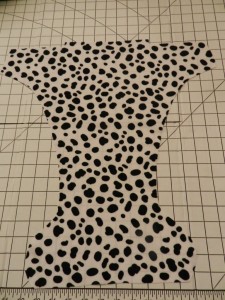
After cutting my diaper pieces out, I put the extra scraps of suede cloth and PUL away until another day, to make “Mamma Cloth.”
The pattern book gave fairly easy directions to follow and suggested using pattern template plastic to create a permanent template for snaps.
I found template plastic at the fabric store, marked the holes from the cut-out pattern onto the plastic, and then poked holes in the plastic.
The snap template is for a medium-size diaper. Once I become more proficient at sewing diapers, I plan to make one-size diapers. I figured that a sized diaper would be a good starting point for me, since I’m not very good at sewing yet.
I learned that when you sew a diaper, it’s important to reinforce the section of PUL where you place the snaps.
The book gave two options: use individual pieces of PUL under each snap, or make an entire yoke to go over that part of the diaper. That’s what I did for this pocket diaper.
It didn’t go exactly as planned.
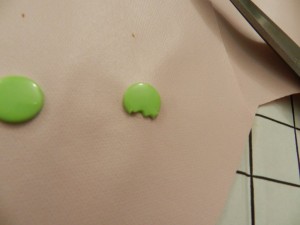
I finished the yoke and started applying snaps. I’d read horror stories about putting snaps on diapers, but it was going beautifully…until in a daze I put the WRONG snap on. Basically, the snap part that should have gone on the back wings of the diaper, I put on the front. Or…I put the boy part where the girl part should’ve gone. Make sense?
There are plenty of people who have made this or a similar mistake, I discovered, when I started to research online. The best suggestion was to use pliers to snap the head until I could reach the stem with cuticle scissors, and then cut the stem. Well, I got rid of my cuticle scissors years ago after they destroyed my fingers, and I didn’t have pliers readily available. I just chipped at the snap with regular, adult-size scissors. Let me just say that I do NOT recommend you do this. In fact, please don’t. It’s a wonder I didn’t slice a chunk of flesh off my fingers and destroy the diaper.
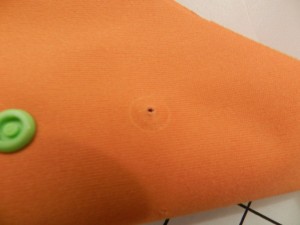
Miraculously, I didn’t damage myself or the fabric. I did stick another little piece of PUL under the new snap as triple reinforcement.
Once I finally finished sewing the diaper, I realized a few things that I thought I should share to any other aspiring-diaper-makers.
MY HARD-LEARNED TIPS:
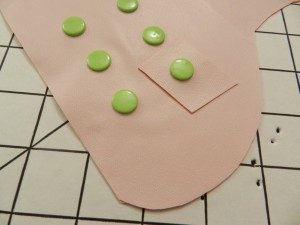
1. Do not make the seam allowance too large. Or (if you do not know what a seam allowance is) try to sew near the edge of the fabric. If you sew further in, the diaper will be smaller. Your medium-size diaper will fit like a smaller diaper.
2. Pay attention to where the boy and girl snap parts go.
3. PUL is a very slippery fabric to sew. Stick some tissue paper over top (or under) and sew right through the paper. You can pull it off afterwards.
4. My diaper unintentionally looks like a Halloween diaper.
5. Be very careful when you cut out the wings in the fabric, or they will not be the same size, and your diaper will look weird.
6. It is really difficult to hold leg elastic completely stretched and thread sticky PUL fabric and other layers under your sewing machine foot at the same time, all while making sure you don’t sew over top the elastic. I have new-found respect for all veteran diaper makers and WAHMs.
Want to see the finished product? Of course you do!
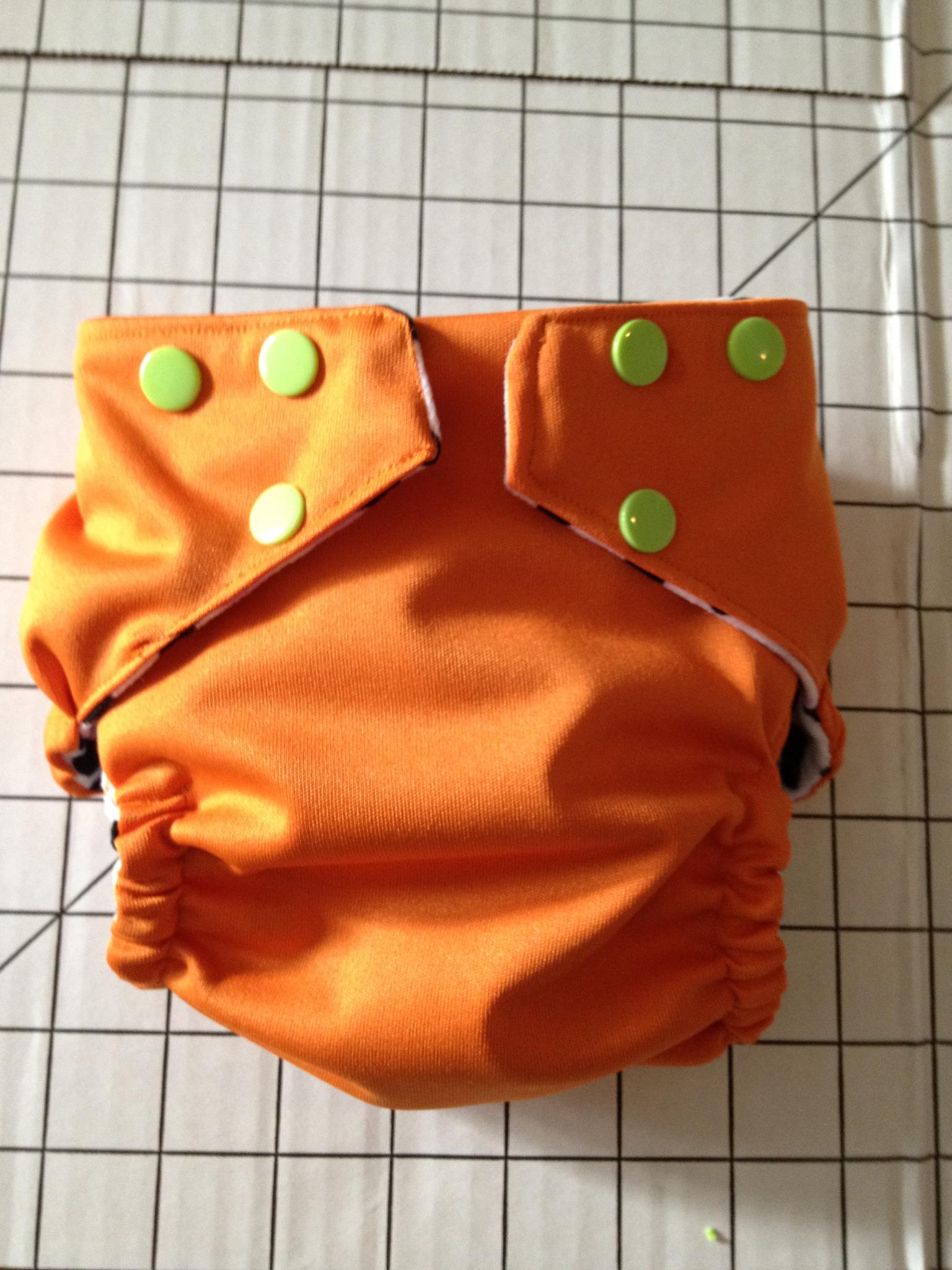
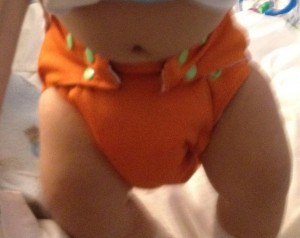
Note: This post contains affiliate links.

